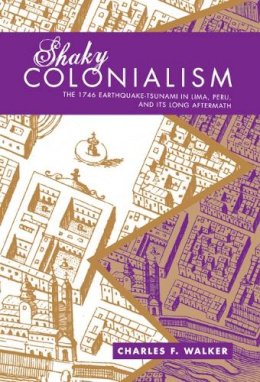
Shaky Colonialism: The 1746 Earthquake-Tsunami in Lima, Peru, and Its Long Aftermath
Charles F. Walker
Through his ambitious rebuilding plan, the Viceroy sought to assert the power of the colonial state over the Church, the upper classes, and other groups. Agreeing with most inhabitants of the fervently Catholic city that the earthquake-tsunami was a manifestation of God’s wrath for Lima’s decadent ways, he hoped to reign in the city’s baroque excesses and to tame the city’s notoriously independent women. To his great surprise, almost everyone objected to his plan, sparking widespread debate about political power and urbanism. Illuminating the shaky foundations of Spanish control in Lima, Walker describes the latent conflicts—about class, race, gender, religion, and the very definition of an ordered society—brought to the fore by the earthquake-tsunami of 1746.
Product Details
About Charles F. Walker
Reviews for Shaky Colonialism: The 1746 Earthquake-Tsunami in Lima, Peru, and Its Long Aftermath
Mark Alan Healy
Hispanic American Historical Review
“Shaky Colonialism is a fascinating and forcefully argued book that fills a major gap in the scholarly literature on the early Bourbon period in the viceroyalty of Peru. By focusing on the natural disaster of 1746, Walker presents a rich mosaic of race, ethnicity, gender, Baroque piety and the beginnings of Enlightenment-inspired Bourbon regalism in a major urban centre during this largely under-studied period.”
Kenneth J. Andrien
Social History
“While Walker’s description and analysis of the earthquake-tsunami of 1746 and the subsequent efforts to reconstruct Lima present a fascinating story, his book is particularly important for its careful delineation of the capital’s society and the reforming efforts of Viceroy Manso de Velasco. . . . Shaky Colonialism is an excellent study that every student of eighteenth-century Spanish America and the history of Peru should read.”
Mark A. Burkholder
Journal of Latin American Studies
